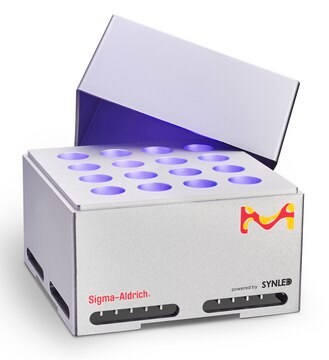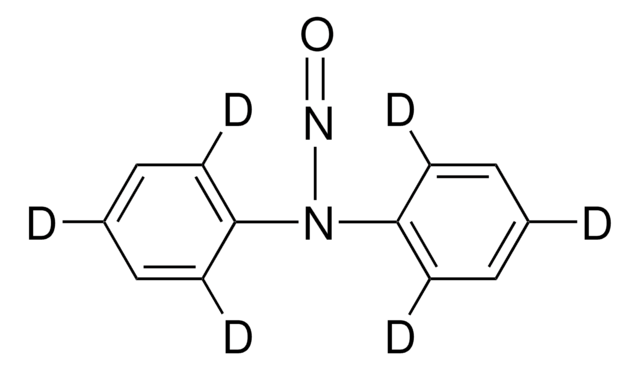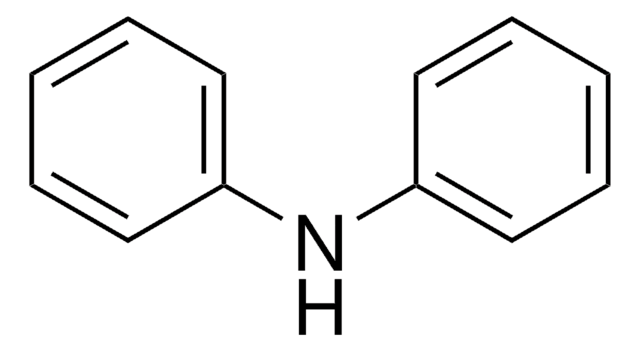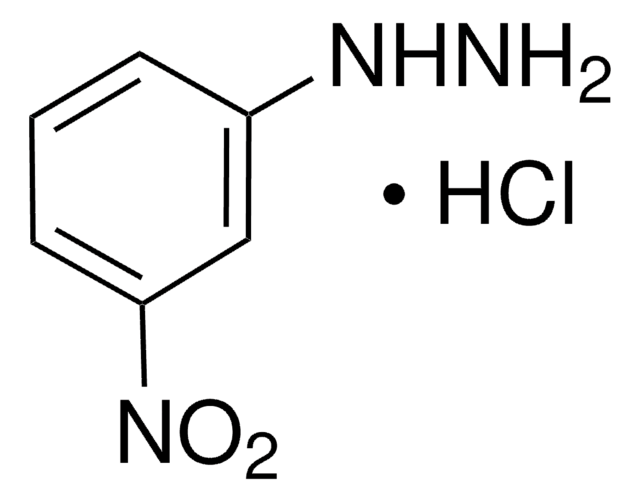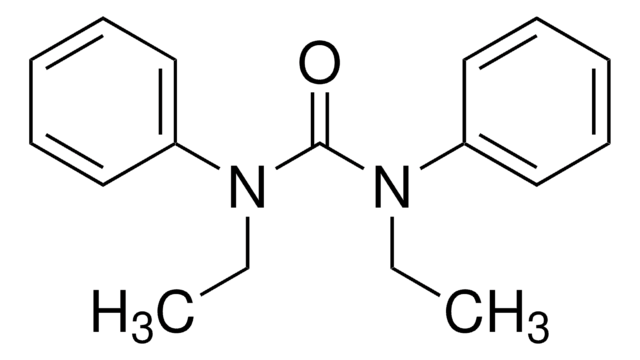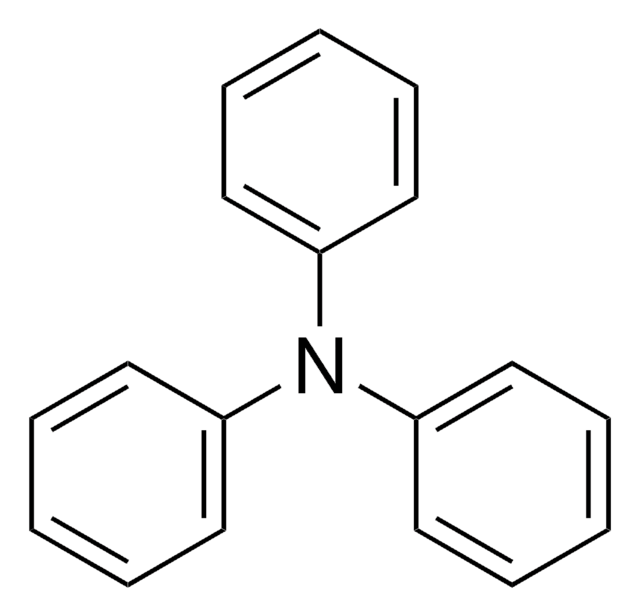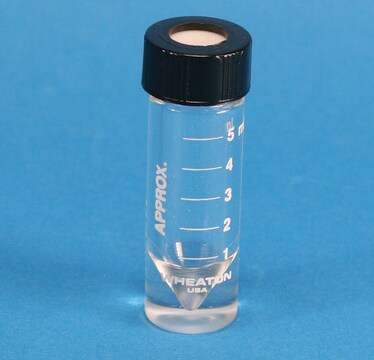Wszystkie zdjęcia(2)
Kluczowe dokumenty
About This Item
Wzór liniowy:
C6H5NHC6H4NO2
Numer CAS:
Masa cząsteczkowa:
214.22
Numer WE:
Numer MDL:
Kod UNSPSC:
12352100
eCl@ss:
39032032
Identyfikator substancji w PubChem:
NACRES:
NA.22
Polecane produkty
Próba
99%
Formularz
solid
mp
132-135 °C (lit.)
grupa funkcyjna
nitro
ciąg SMILES
[O-][N+](=O)c1ccc(Nc2ccccc2)cc1
InChI
1S/C12H10N2O2/c15-14(16)12-8-6-11(7-9-12)13-10-4-2-1-3-5-10/h1-9,13H
Klucz InChI
XXYMSQQCBUKFHE-UHFFFAOYSA-N
Powiązane kategorie
Opis ogólny
4-Nitrodifenyloamina ulega heterogenicznemu katalitycznemu uwodornieniu z przeniesieniem, tworząc p-fenylenodiaminy. 4-Nitrodifenyloamina jest stosowana jako stabilizator materiałów pędnych i wybuchowych.
Zastosowanie
4-Nitrodifenyloamina została użyta do zbadania redukcji nitrowanych pochodnych difenyloaminy w wzbogaconych partiach wody osadowej i gęstych zawiesinach komórkowych beztlenowych, czystych kultur bakteryjnych mineralizujących związki aromatyczne.
Ta strona może zawierać tekst przetłumaczony maszynowo.
Hasło ostrzegawcze
Warning
Zwroty wskazujące rodzaj zagrożenia
Zwroty wskazujące środki ostrożności
Klasyfikacja zagrożeń
Eye Irrit. 2 - Skin Irrit. 2 - STOT SE 3
Organy docelowe
Respiratory system
Kod klasy składowania
11 - Combustible Solids
Klasa zagrożenia wodnego (WGK)
WGK 3
Temperatura zapłonu (°F)
Not applicable
Temperatura zapłonu (°C)
Not applicable
Środki ochrony indywidualnej
dust mask type N95 (US), Eyeshields, Gloves
Wybierz jedną z najnowszych wersji:
Masz już ten produkt?
Dokumenty związane z niedawno zakupionymi produktami zostały zamieszczone w Bibliotece dokumentów.
Heterogeneous catalytic transfer hydrogenation of 4-nitrodiphenylamine to p-phenylenediamines.
Banerjee AA and Mukesh D.
Journal of the Chemical Society. Chemical Communications, 18, 1275-1276 (1988)
Anne-Laure Gassner et al.
Science & justice : journal of the Forensic Science Society, 60(2), 136-144 (2020-03-01)
The present study investigated the organic gunshot residue (OGSR) background level of police vehicles in Switzerland. Specimens from 64 vehicles belonging to two regional police services were collected and analysed by LC-MS in positive mode. The driver's and back seats
O Drzyzga et al.
Applied and environmental microbiology, 61(9), 3282-3287 (1995-09-01)
2-Nitrodiphenylamine, 4-nitrodiphenylamine, and 2,4-dinitrodiphenylamine were anaerobically metabolized in sediment-water batch enrichments inoculated with mud from the German North Sea coast. The first intermediate in 2,4-dinitrodiphenylamine degradation was 2-amino-4-nitrodiphenylamine, which appeared in large (nearly stoichiometric) amounts before being completely reduced to
Anne-Laure Gassner et al.
Science & justice : journal of the Forensic Science Society, 59(1), 58-66 (2019-01-19)
The present study aimed at providing data to assess the secondary transfer of organic gunshot residues (OGSR). Three scenarios were evaluated in controlled conditions, namely displacing a firearm from point A to point B, a simple handshake and an arrest
Zuriñe Abrego et al.
The Analyst, 139(23), 6232-6241 (2014-10-11)
A method based on scanning laser ablation and inductively coupled plasma-mass spectrometry (SLA-ICPMS) and Raman micro-spectroscopy for the detection and identification of compounds consistent with gunshot residue particles (GSR) has been developed. The method has been applied to the characterization
Nasz zespół naukowców ma doświadczenie we wszystkich obszarach badań, w tym w naukach przyrodniczych, materiałoznawstwie, syntezie chemicznej, chromatografii, analityce i wielu innych dziedzinach.
Skontaktuj się z zespołem ds. pomocy technicznej
